#1 Calories, #2 Macros, #3 Micros, #4 Nutrient Timing, #5 Supplements
YOU’VE BEEN LIED TO
I started this website in 2011 to take revenge on an industry that had lied to me.
For the majority of my 20s, I was brainwashed by nutrition scams and hype. I spent a lot of money that I didn’t really have on useless supplements and wasted a lot of time.
The fitness industry does not benefit from genuinely educating people.
People desperately want to believe in shortcuts, ‘biohacks,’ and magic powders. And there are far greater profits to be made in selling them, rather than serving up legitimate information.
Therefore, the charlatans will always have a broader reach with more advertising dollars behind them.
Anyone with half a brain can guess that the rapid-fat-loss-promising supplements that Instagram influencers push on their young fans are nonsense. But how does the non-expert distinguish between legit information and that which is craftily designed to seem it?
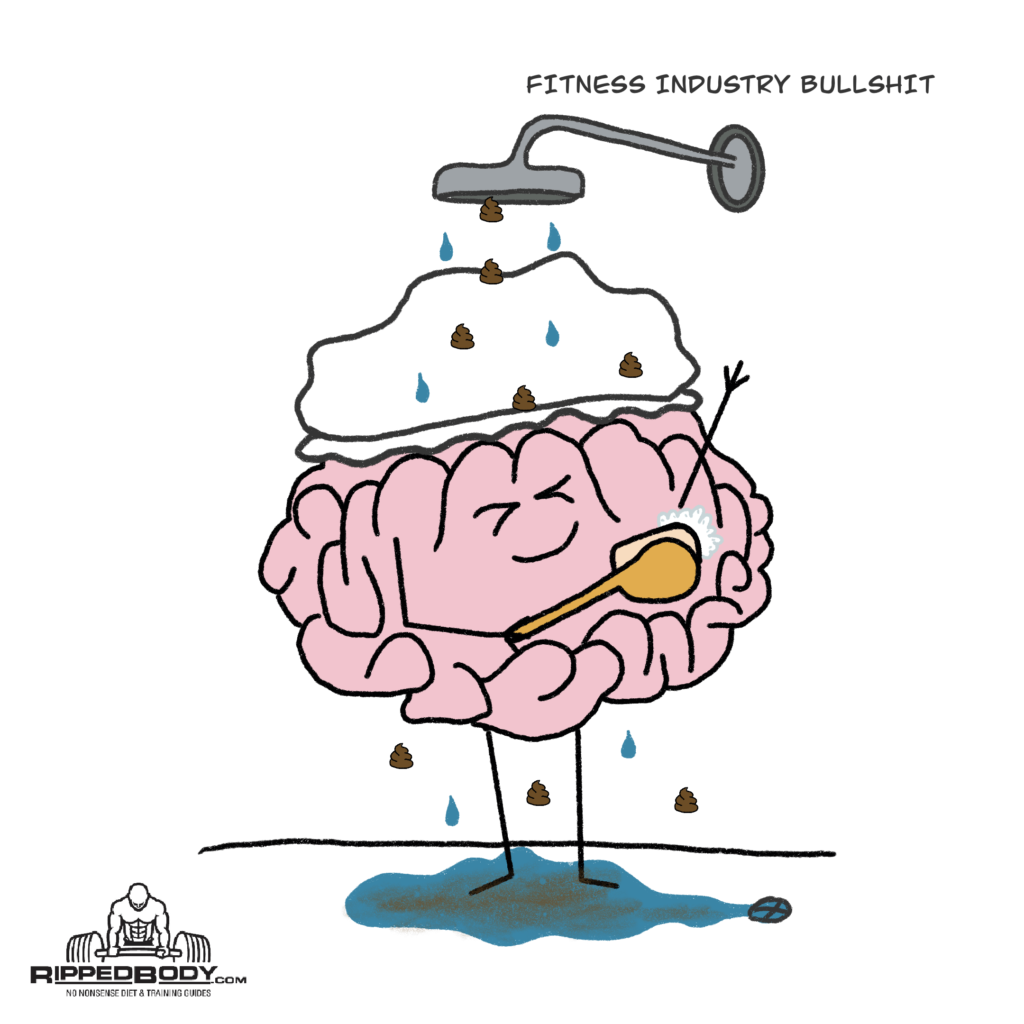
What we believe to be true is often what we are first exposed to. The sunk-cost fallacy makes it hard for our brains to accept we may have invested 10 hours reading a book by a doctor who is misrepresenting science. Algorithms and confirmation bias push us into echo chambers, reinforcing whatever existing beliefs we may have.
Logically, we know there are books, documentaries, and podcasts out there with factually incorrect information. But cognitive biases affect us all. And they may stop us from accepting the idea that may be one of them.
This guide, using the best scientific evidence we have to date, will show you how to set up your diet in a way that will maximally support your strength and physique goals.
You will understand the reasons behind every decision you make. Some of the small trade-offs will promote greater balance in your life.
But most importantly, it will teach you how to think. This means you’ll gain the superpower of being able to spot nutritional nonsense from a mile away.
I would very much like you to read on. But can I be trusted?
My Biases & How I Earn A Living
“It is difficult to get a man to understand something when his salary depends upon his not understanding it!”
Upton Sinclair
I’d like to explain my background so that you can understand my biases and decide whether you can trust me before you read any further.
You might say that I earn a living from calling out the nonsense in the fitness industry. I don’t do that by attacking specific brands, but from picking apart ideas and presenting easy to follow nutrition and training guides for people.
Originally this website was in two languages, English and Japanese (I live in Tokyo). I split them into two separate sites in 2012.
On RippedBody.com, I do not allow advertising, and you won’t find any physical products for sale where I sneakily earn an affiliate commission.
I earn a living mainly from online coaching. My success here depends on my reputation, which depends on producing clients’ results.
However, I also earn money from three books and international royalties on the translations of them. I can understand that as much as this may add credibility for some people, you could question my motives in writing this site because of it.
The Japanese site lost money every year for the first 8 years. This wasn’t intentional — online coaching was something the Japanese took a while to embrace.
However, because we consistently put out top-notch translated and original content, and I refused to monetize by other means, we became the most highly-regarded fitness information site in Japan.
I did this for two reasons:
- I believe that everyone should have access to no BS fitness info, without language being a barrier.
- I felt uniquely positioned to make an impact, being able to bridge the gap between the fitness community in Japan and the West.
- I could afford to take the losses, using the money made on Ripped Body to cover it.
This year, we should finally turn a profit with the release of our first two products — a video series teaching people how to squat, bench, and deadlift, along with translations of my books.
Given this background, my biases are towards simplicity, time-efficiency, and an intense level of skepticism towards the supplement industry. I require a very high level of evidence of the efficacy of something before I will recommend it, and these biases affect this guide.
The Muscle and Strength Nutrition Pyramid
One of the best ways I know of explaining the order of nutrition importance is by using a pyramid shape.
I first came across this idea in a YouTube video by Dr. Eric Helms, in 2015. I reached out to him to ask permission to create this short guide, and through a fortunate series of events, this led to me co-authoring two books with him, expanding on it considerably.
So, I’ll continue the pyramid idea here and play with it a little.
I’d imagine that if the ancient Egyptians used fitness industry marketing logic to build their pyramids, they’d look something like this.
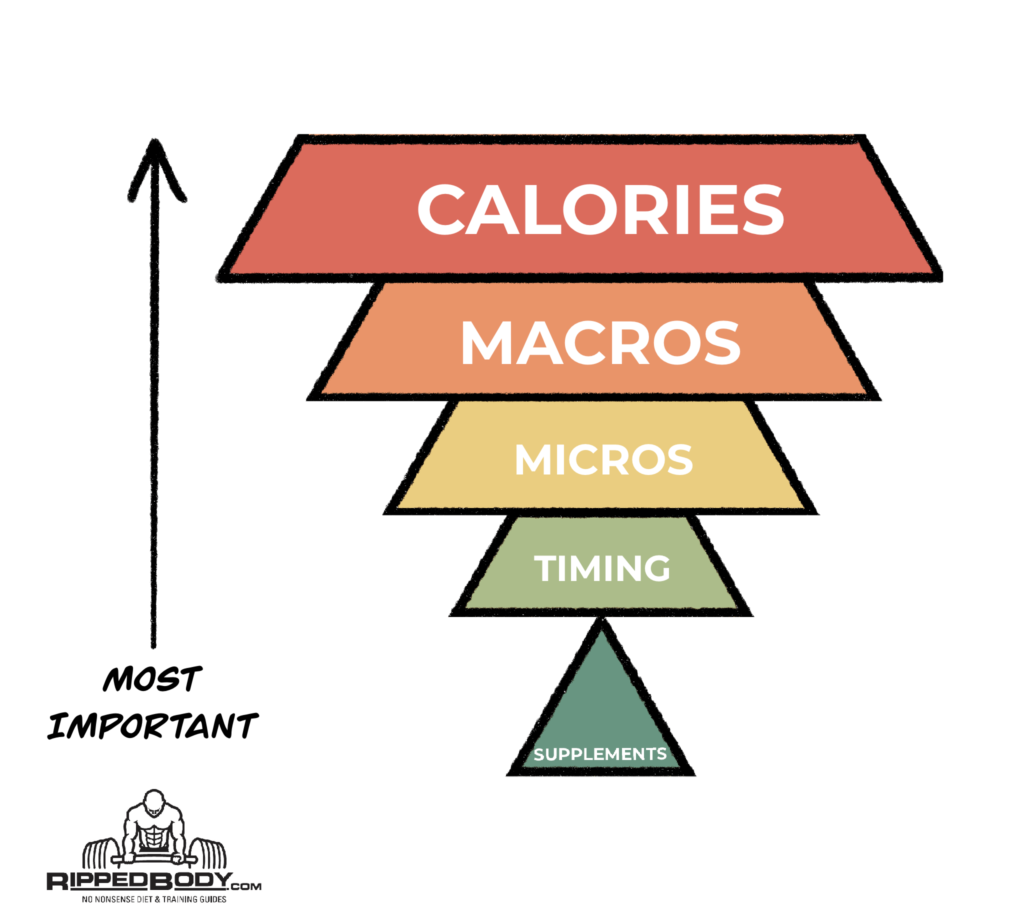
It’s damn hard to make a profit from telling people that calorie balance is key, so the marketing forces of the fitness industry work to make us believe that the nutrition order of importance is backward.
Imagine you are someone completely new to nutrition and training and looking to get in shape.
You read the latest magazines, complete your Google research, and armed with the knowledge of the pyramid above, you attempt to create a nutrition plan for yourself, thinking this is going to get you jacked like a Marvel Superhero in no time.
However, you’re faced with a problem: nobody seems to be able to agree on anything.
What supplements are best? Is fasting the answer we’ve all been hoping for? Or should you be consuming six meals a day? You’re tempted to go vegan after seeing a Netflix documentary saying how that’s better for muscle growth (nope). But what if the keto people are right?!
So, you decide to cover your bases and come up with the following:
- First, you order ALL the supplements, because you’re on a mission and you have been told that magic powders are key to getting you there. Pre-, post-, intra-workout shakes and horse-sized pills are put on a monthly recurring order. You think you can’t go wrong this way.
- Next, you decide you’re going to eat six meals on the days you train but fast entirely on the days you don’t. You figure this will maximize muscle growth and fat burning while clearing away cancer cells.
- You drink a green powdered drink instead of eating any vegetables, because you can’t trust the quality that “big agriculture” will deliver to you. (Plus, who wants to bother cooking them?)
- Confused as to what ‘named’ diet may be best, you decide to do vegan-keto, paying zero attention to calorie balance.
The result should be no surprise…
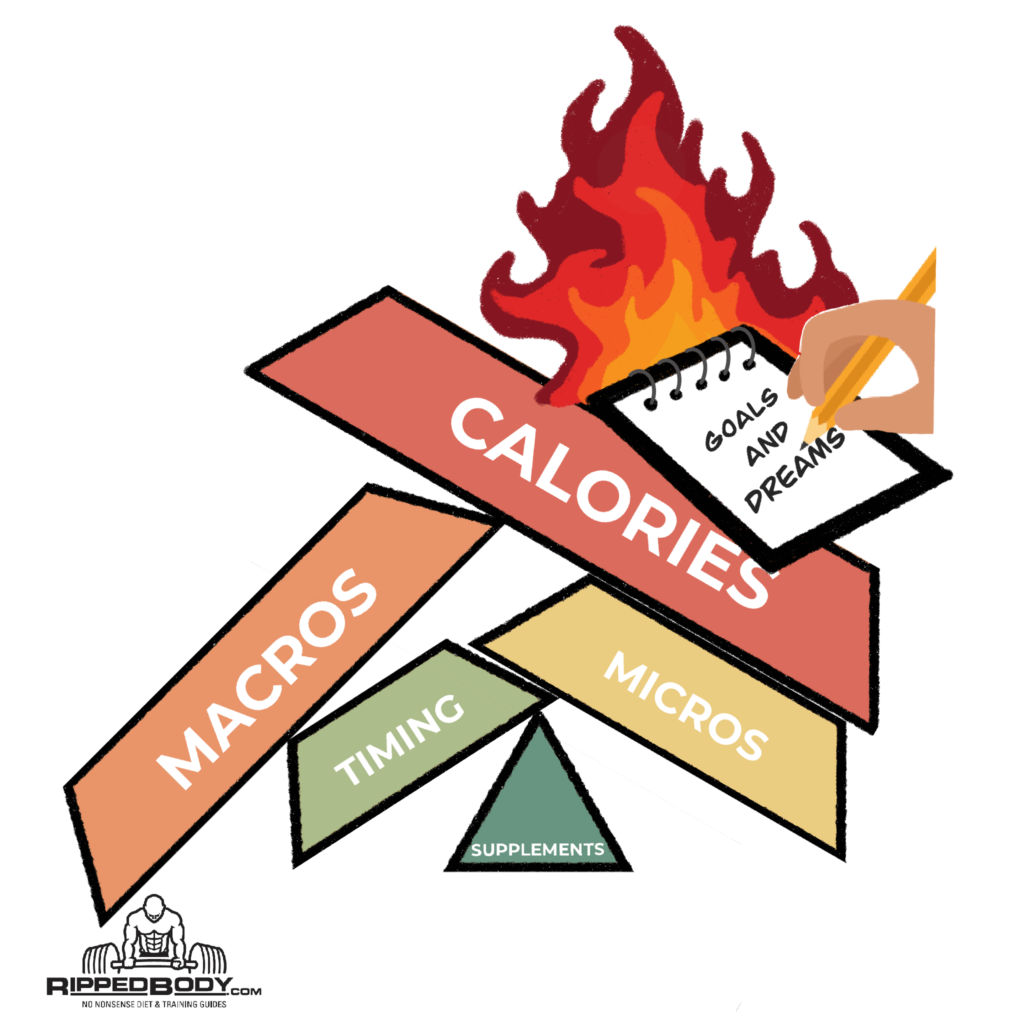
Now, you might be laughing at the ridiculousness of the previous setup, but this is the kind of thing that I see people do all the time.
Sadly, the truth is that we can’t just eat ‘clean foods’ and ignore calories. We can’t supplement our way out of a bad diet, and we can’t use some special meal timing tricks to enable us to binge eat in the evenings.
The Nutrition Pyramid of ImpoRtance
Here is how the pyramid should actually look:
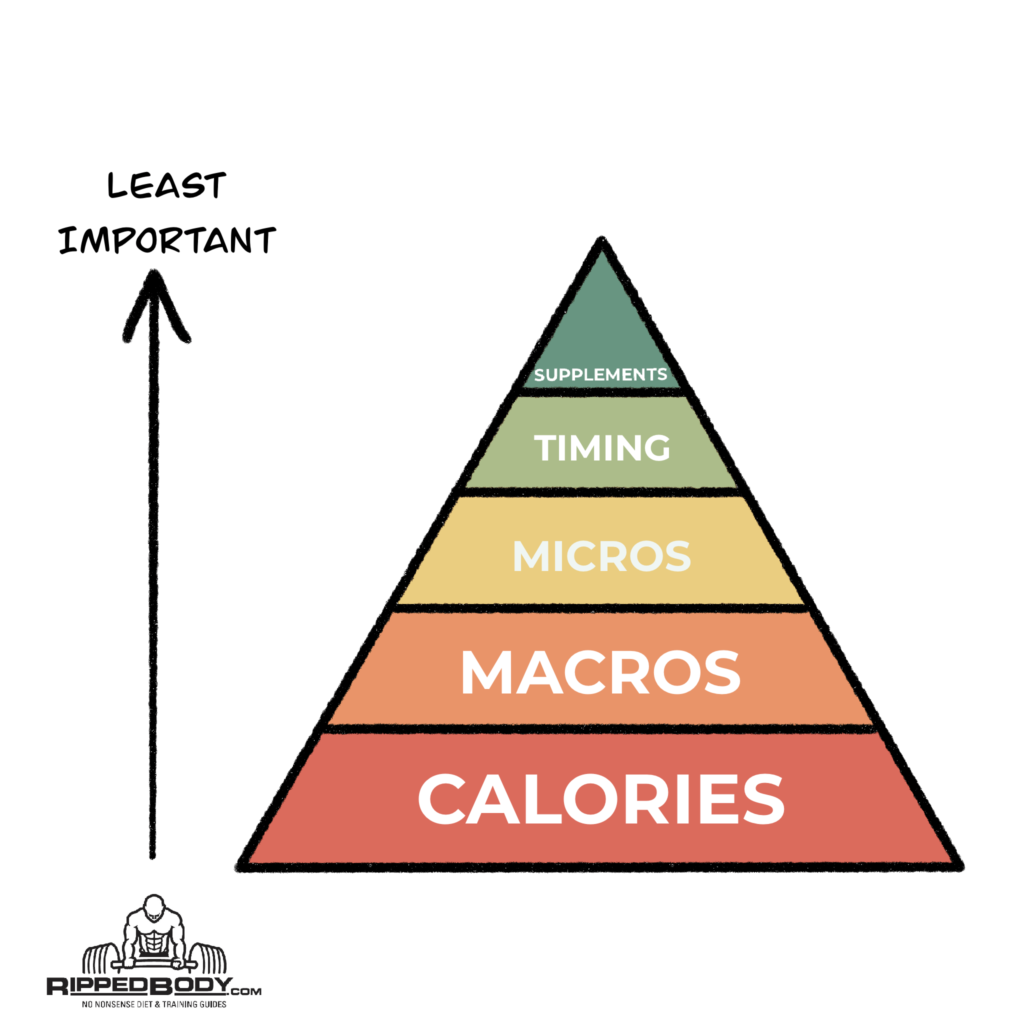
Layer 1: Calorie intake
Energy balance determines whether weight will be gained or lost. If you have a caloric surplus, you will gain weight. If you have a caloric deficit, you will lose weight. In this guide I’ll cover two key parts:
- How to calculate calorie intake for bulking, cutting, or body recomposition phases.
- How to make adjustments to calorie intake if things don’t proceed as planned.
Layer 2: Macronutrients
Macronutrients (known as ‘macros‘) are the proteins, fats, and carbs that make up the foods we eat.
You may have heard that while energy balance determines whether weight is gained or lost, macronutrients (carbohydrate, protein, and fat) determine whether that change is fat or muscle mass.
Though that is a gross oversimplification, macros play an important role and need consideration. Simply put, get them right and you’ll reach your physique goals quicker and easier than if you ignore them.
Layer 3: Micronutrients
If you think of macros as being the gas in your car, micros (vitamins and minerals) are the oil and lubricants.
I’ll give a few simple rules of thumb to help you safeguard deficiencies and mention specific at-risk populations in this section.
Layer 4: Nutrient Timing
Nutrient timing refers to what you eat and when. Should you slam a protein shake before or after your workout? What about post-workout carbs? Well, depending on when you train, and how you have your regular meal times set up, these things may not be necessary at all.
This section will cover meal timing, calorie cycling, macro cycling, and my latest thoughts on intermittent fasting.
What I have learned over the years working with people is that there is a large degree of flexibility with nutrient timing and most people just need to avoid extremes rather than worry about the minute details (though I’ll do a little of that too).
My bias is towards simplicity because this leads to consistency, which is what delivers results.
Layer 5: Supplements
Supplements are the least important part of any nutrition plan. Very few work. Those that do, do little, and cannot make up for any of the other four things being screwed up.
However, some supplements can be useful, so I’ll cover supplements for physique and performance, as well as for general health.
YOU SHOULD Focus On That Which Matters Most, FIRST
If it isn’t clear by now, I’d like to underscore one important point: all layers of the pyramid are not of equal importance. I hope this is a fantastically freeing thing because it means you get a disproportionate return on your efforts from focusing on the first few layers of the pyramid.
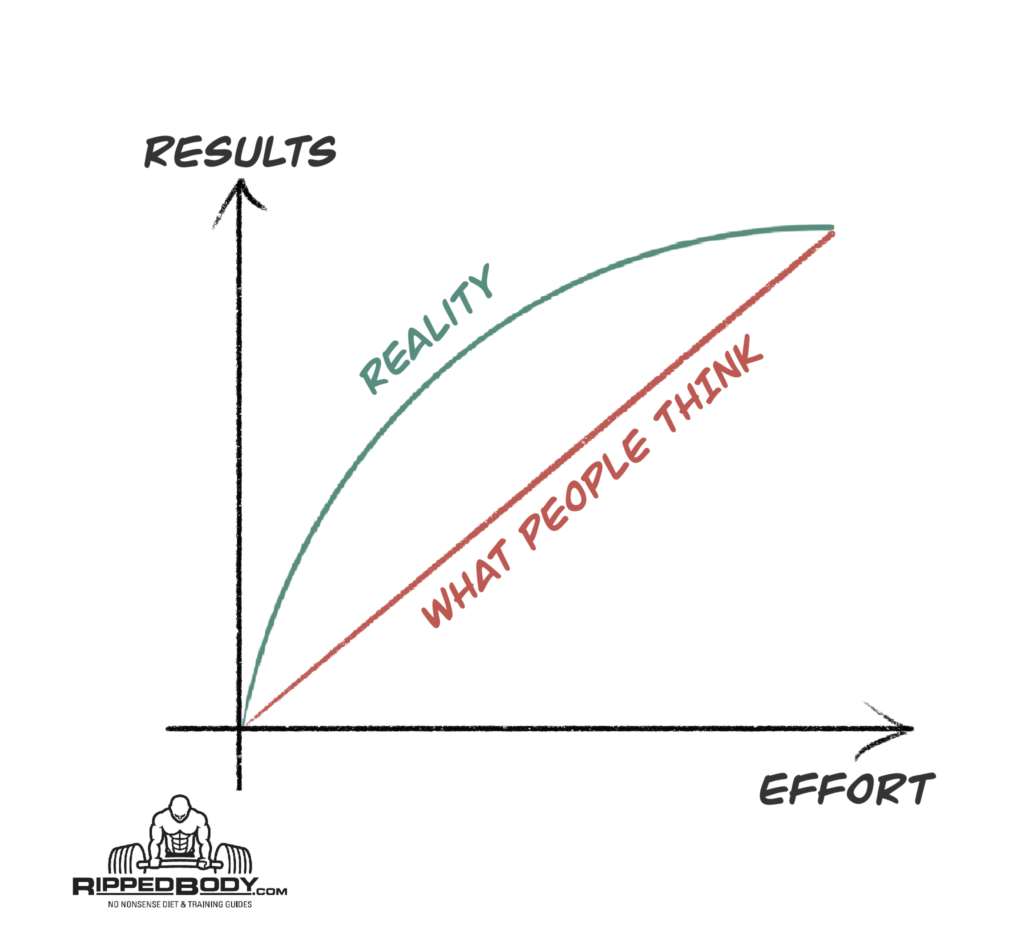
So, if you start by keeping to your calorie intake target, get your macros in the right ballpark, without doing anything silly with nutrient timing, you’re most of the way there.
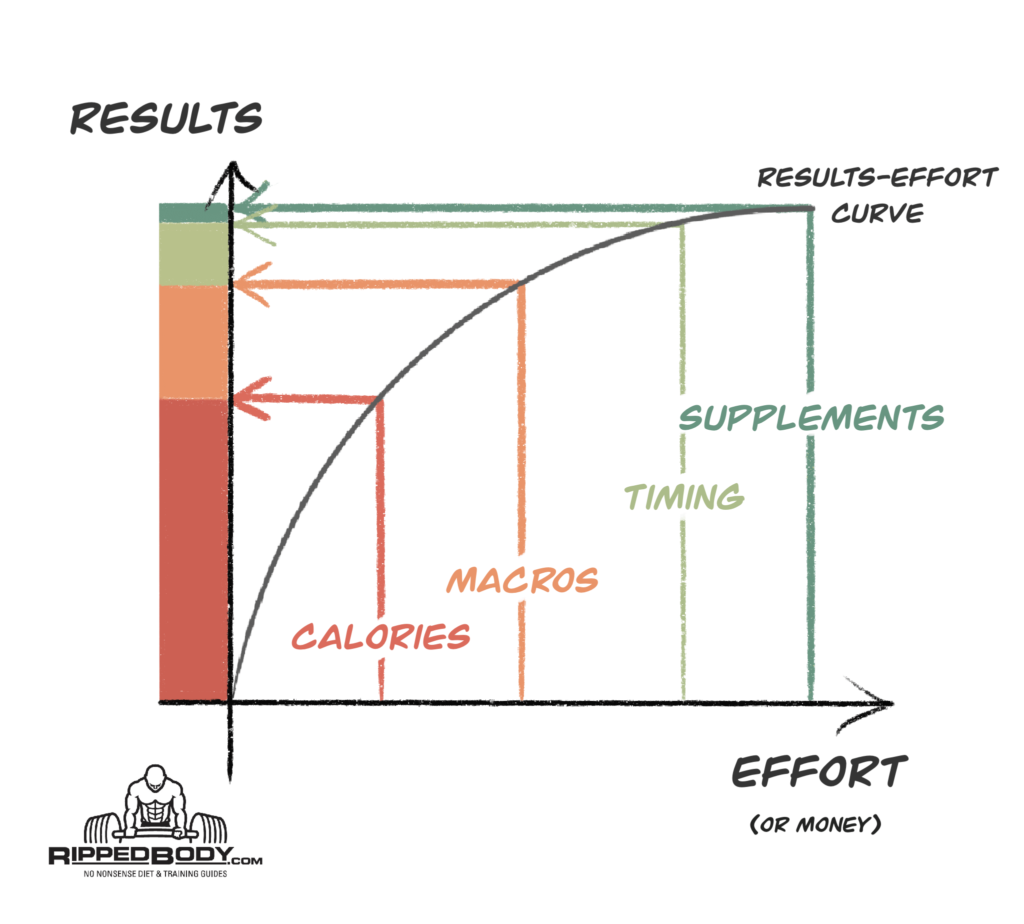
(You’ll see that I didn’t include micronutrients here. This is because while a shortfall can’t stop you progressing in the short-term, in the long-term your health could crumble, and I didn’t find this easy to place a value on.)
It also means that if some things in the later layers become too complicated, ignore them, you’re not missing much.
Ready? → Level 1: Setting Your Calorie Intake, or…
DOWNLOAD THE FULL VERSION OF THIS GUIDE!
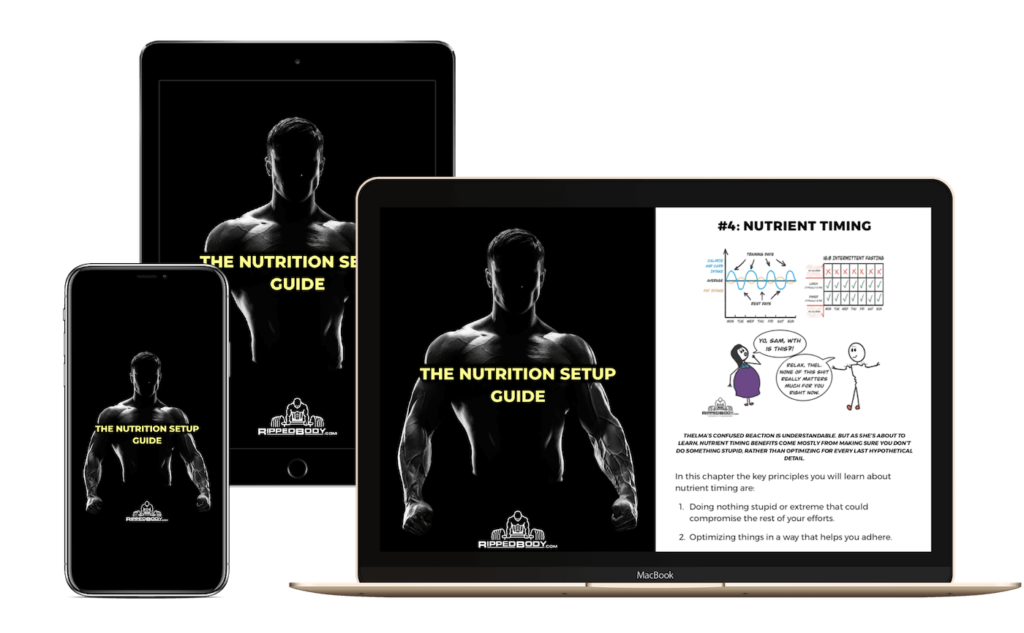
I’ll send you the book, our training programs, and a 15-day Transformation Kickstart Course on how to put it all together without making the most common progress-killing mistakes. 👇

Privacy policy.